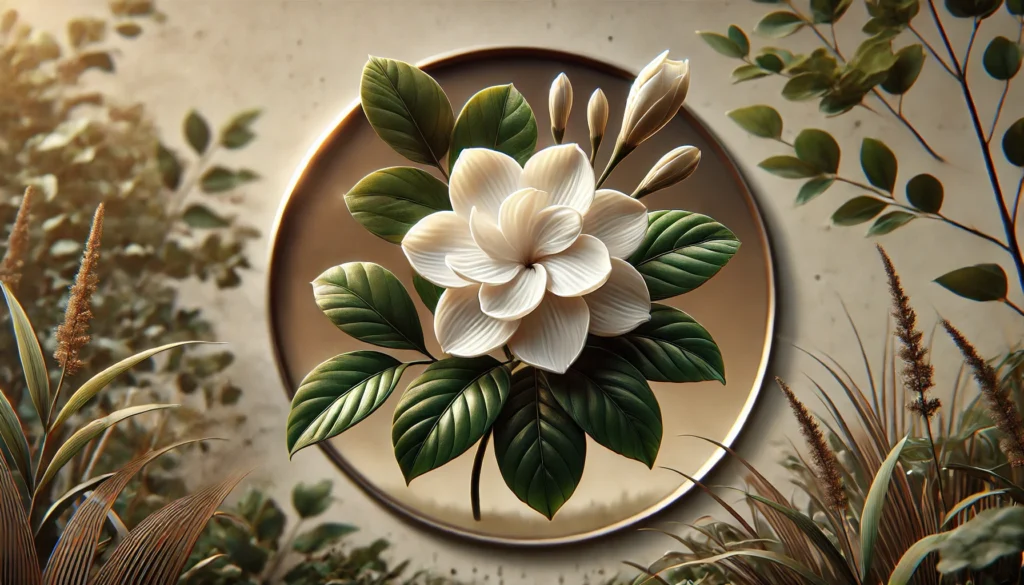Have you ever caught the sweet scent of jasmine on a warm summer evening and felt instantly transported to another time and place? Imagine that scent woven into the very fabric of a nation’s identity, its delicate petals carrying the weight of centuries-old legends and cultural pride. Welcome to the enchanting world of the sampaguita, the national flower of the Philippines.
As we embark on this aromatic adventure, prepare to be whisked away to lush tropical landscapes where myth and reality intertwine like vines in a dense forest. The sampaguita, with its pristine white blossoms and intoxicating fragrance, isn’t just a flower – it’s a living piece of Philippine heritage, a symbol of purity, love, and devotion that has captured hearts for generations.
The Sampaguita: More Than Just a Pretty Flower
A Botanical Wonder
Let’s start by getting to know our fragrant friend a little better. The sampaguita, scientifically known as Jasminum sambac, is a species of jasmine native to South and Southeast Asia. Its name is believed to come from the Filipino words “sumpa kita,” which means “I promise you” – a phrase that already hints at the romantic legends surrounding this bloom.
But what makes the sampaguita so special? For starters, its delicate white flowers are a sight to behold. Usually no larger than an inch in diameter, these tiny blossoms pack a powerful punch in the fragrance department. The sampaguita’s scent is often described as sweet, exotic, and intoxicating – a perfume that has inspired poets, lovers, and perfumers alike.
In the Philippines, you’ll find sampaguita everywhere – adorning altars in churches, woven into leis worn at special occasions, and even sold as garlands by street vendors. Its omnipresence in Filipino life is a testament to its cultural significance. But how did this humble flower rise to such prominence?
A Symbol of National Pride
The sampaguita’s journey to becoming the national flower of the Philippines is a tale as fascinating as the legends surrounding it. Officially declared as the national flower in 1934 by Governor-General Frank Murphy, the sampaguita beat out other contenders like the ilang-ilang and the pink lotus to claim this prestigious title.
Why the sampaguita? Well, it’s not just about its beauty or fragrance. The flower embodies qualities that Filipinos hold dear – purity, simplicity, humility, and strength. Despite its delicate appearance, the sampaguita is remarkably resilient, able to thrive in various conditions – much like the Filipino spirit itself.
But the story of the sampaguita goes far beyond official declarations. To truly understand its place in Filipino hearts, we need to delve into the rich tapestry of legends and folklore that surround this beloved bloom.
Legends of Love and Devotion
The Tale of Lakambini and Lakan
One of the most popular legends associated with the sampaguita takes us back to ancient times, to a kingdom ruled by a wise and just datu (chief). The datu had a daughter named Lakambini, renowned for her beauty and kind heart. Many suitors sought her hand in marriage, but Lakambini’s heart belonged to a brave warrior named Lakan.
Lakan, though of humble origins, proved his worth through countless acts of bravery and kindness. The datu, impressed by Lakan’s character, gave the couple his blessing. However, before they could be married, Lakan was called away to defend the kingdom from invaders.
Lakambini, heartbroken but resolute, made a solemn vow. She promised Lakan that she would wait for him, no matter how long it took. “Sumpa kita,” she said – “I promise you.” To seal her vow, she planted a jasmine cutting near the window where she would watch for Lakan’s return.
Days turned into weeks, weeks into months, and still, there was no sign of Lakan. Lakambini remained faithful to her promise, tending to the jasmine plant that had now grown into a beautiful bush covered in fragrant white flowers. The villagers, moved by her unwavering devotion, began to call the flower “sampaguita” – a corrupted version of her vow, “sumpa kita.”
Years passed, and Lakambini grew old, but her love for Lakan never wavered. Legend has it that when she finally passed away, her spirit transformed into a sampaguita flower, forever waiting for her beloved to return.
This tale of enduring love and faithfulness resonates deeply with Filipinos, embodying the values of loyalty and commitment that are so prized in their culture. It’s no wonder that the sampaguita has become a popular flower for weddings and romantic gestures!
The Legend of Maria Makiling
Another fascinating legend intertwines the sampaguita with Maria Makiling, a famous diwata (nature spirit) in Philippine mythology. According to this tale, Maria Makiling lived on Mount Makiling in Laguna, watching over the forests and protecting the creatures that dwelled there.
One day, a young man named Juan ventured into Maria Makiling’s domain, seeking rare herbs for his ailing mother. Maria, touched by Juan’s devotion to his mother, decided to help him. She appeared to him in the form of a beautiful maiden and led him to a clearing filled with medicinal plants.
As Juan gathered the herbs, he couldn’t help but be enchanted by Maria’s beauty and kindness. The two fell in love, and Juan promised to return to her once his mother was healed. Before he left, Maria gave him a sampaguita flower, telling him that as long as the flower remained fresh and fragrant, her love for him would endure.
Juan returned to his village and used the herbs to cure his mother. However, caught up in the celebrations and the routines of village life, he forgot his promise to Maria. Days passed, and Juan noticed that the sampaguita flower remained as fresh as the day Maria had given it to him, its sweet scent a constant reminder of his forgotten vow.
Filled with remorse, Juan rushed back to Mount Makiling, but it was too late. Maria, heartbroken by his betrayal, had retreated deep into the mountain, never to be seen again. It’s said that the sampaguita flowers that now grow abundantly on Mount Makiling are Maria’s tears, their enduring fragrance a testament to her eternal love and sorrow.
This legend not only adds to the romantic allure of the sampaguita but also serves as a cautionary tale about the importance of keeping one’s promises – a value deeply ingrained in Filipino culture.
The Sampaguita in Filipino Culture and Traditions
A Flower for All Occasions
The sampaguita’s significance in Filipino culture extends far beyond its legendary origins. This versatile flower plays a role in numerous aspects of daily life and special occasions. Let’s explore some of the ways Filipinos incorporate the sampaguita into their traditions:
- Religious Ceremonies: In a country where Catholicism is the predominant religion, the sampaguita holds a special place in religious practices. Its pure white petals symbolize the Virgin Mary’s purity, and garlands of sampaguita are often used to adorn statues of saints and the Virgin Mary during religious processions and festivals.
- Weddings: Given its associations with love and fidelity, it’s no surprise that the sampaguita is a popular choice for Filipino weddings. Brides often wear sampaguita in their hair or carry bouquets of the flower, while guests may be given sampaguita leis as favors.
- Graduation Ceremonies: In many schools, it’s tradition to give graduates leis made of sampaguita as a symbol of achievement and a fragrant reminder of their academic journey.
- Welcome Gestures: Filipinos are known for their hospitality, and what better way to welcome guests than with a sweet-smelling garland? Important visitors to the Philippines are often greeted with sampaguita leis upon arrival.
- Traditional Medicine: Beyond its ornamental uses, the sampaguita has been used in traditional Filipino medicine for centuries. The flowers and leaves are believed to have various medicinal properties, from reducing fever to soothing headaches.
A Symbol of Resilience
The sampaguita’s cultural significance goes beyond its use in ceremonies and traditions. For many Filipinos, this humble flower represents resilience and the ability to thrive in challenging conditions – qualities that resonate deeply with the national character.
Consider the sampaguita vendors you’ll find on many Filipino streets. Often children or elderly individuals, these vendors string together fresh sampaguita garlands each day, selling them to passersby for a modest sum. Their work is labor-intensive and the profits small, yet they persist, much like the sampaguita itself, which continues to bloom and spread its fragrance regardless of its surroundings.
This image of the sampaguita vendor has become an iconic symbol of Filipino perseverance and ingenuity. It’s a reminder that beauty and dignity can be found even in the most humble of circumstances – a sentiment that captures the essence of the Filipino spirit.
The Sampaguita in Art and Literature
Poetic Inspiration
The sampaguita’s beauty and symbolism have long been a source of inspiration for Filipino artists and writers. Countless poems have been penned in honor of this beloved flower, capturing its fragrance, purity, and cultural significance in verse.
One of the most famous sampaguita-inspired poems is “Sampaguita” by Filipino poet and revolutionary Andres Bonifacio. In this work, Bonifacio uses the sampaguita as a metaphor for the purity and beauty of a woman’s love. The poem’s opening lines set the tone:
“Sampaguitang pumupukol sa
Simoy ng hanging malamig,
Puso ko’y nangangatal sa
Bango mong namumukod-tangi.”
(Sampaguita swaying in
The cool breeze,
My heart trembles at
Your unique fragrance.)
This poem, like many others inspired by the sampaguita, showcases how deeply intertwined the flower is with Filipino concepts of love, beauty, and national identity.
Visual Arts
The sampaguita’s visual appeal has made it a popular subject in Filipino visual arts as well. From traditional paintings to modern graphic design, the flower’s delicate white petals and distinctive shape have been depicted in countless ways.
One particularly interesting artistic tradition involving the sampaguita is the creation of sampaguita chandeliers. These intricate decorations, often seen in churches and at special events, consist of hundreds or even thousands of sampaguita blossoms carefully strung together to form elaborate, fragrant light fixtures. These chandeliers are not just visually stunning but also fill the air with the sampaguita’s sweet scent, creating a multi-sensory artistic experience.
The Sampaguita: A Global Ambassador
International Recognition
While the sampaguita holds a special place in Filipino hearts, its appeal extends far beyond the shores of the Philippines. The flower’s beauty and fragrance have made it popular in many parts of the world, particularly in tropical and subtropical regions.
In fact, the sampaguita is not just the national flower of the Philippines – it’s also the national flower of Indonesia (where it’s known as melati putih) and the state flower of Tamil Nadu in India. This shared appreciation for the sampaguita highlights the flower’s universal appeal and its ability to transcend cultural boundaries.
In the World of Perfumery
The sampaguita’s intoxicating scent has long been prized by perfumers around the world. Its fragrance profile – described as sweet, exotic, and slightly green – adds depth and complexity to many popular perfumes.
Here’s a table showcasing some well-known perfumes that feature sampaguita (or jasmine sambac) as a key note:
| Perfume Name | Brand | Release Year | Key Notes |
|---|---|---|---|
| J’adore | Dior | 1999 | Sampaguita, Rose, Ylang-ylang |
| Alien | Thierry Mugler | 2005 | Sampaguita, Cashmeran, Amber |
| Flowerbomb | Viktor & Rolf | 2005 | Sampaguita, Rose, Orchid |
| Gucci Flora | Gucci | 2009 | Sampaguita, Rose, Osmanthus |
| Elie Saab Le Parfum | Elie Saab | 2011 | Sampaguita, Orange Blossom, Patchouli |
The inclusion of sampaguita in these internationally renowned fragrances speaks to its global appeal and its ability to evoke a sense of exotic beauty and romance.
Preserving the Legacy of the Sampaguita
Conservation Efforts
As beloved as the sampaguita is, it faces challenges in its native habitats. Urbanization, climate change, and over-harvesting for commercial purposes have put pressure on wild sampaguita populations in some areas.
Recognizing the cultural and ecological importance of the sampaguita, various conservation efforts are underway in the Philippines. These include:
- Cultivation Programs: Encouraging the cultivation of sampaguita in home gardens and public spaces to reduce reliance on wild populations.
- Sustainable Harvesting Practices: Educating sampaguita harvesters on sustainable techniques to ensure the long-term viability of the plants.
- Research Initiatives: Studying the sampaguita’s ecology and developing methods to protect and propagate the species more effectively.
- Public Awareness Campaigns: Raising awareness about the sampaguita’s cultural significance and the need for its conservation.
The Future of the National Flower
As we look to the future, the sampaguita’s role as a symbol of Filipino identity and values seems secure. Its resilience, beauty, and rich cultural associations continue to resonate with new generations of Filipinos, both at home and in the diaspora.
However, ensuring the sampaguita’s continued presence in Philippine landscapes and traditions will require ongoing efforts. From supporting sustainable cultivation practices to preserving the legends and traditions associated with the flower, there are many ways we can all contribute to keeping the legacy of the sampaguita alive.
Conclusion: The Enduring Allure of the Sampaguita
As we come to the end of our fragrant journey through the world of the sampaguita, it’s clear that this small white flower carries an outsized cultural significance. From ancient legends of love and devotion to its modern-day status as a national symbol, the sampaguita has woven itself into the very fabric of Filipino identity.
The tale of the sampaguita is more than just a story about a flower – it’s a reflection of Filipino values, resilience, and the enduring power of cultural symbols. Whether you encounter it as a fragrant lei, a poetic metaphor, or a note in your favorite perfume, the sampaguita continues to captivate and inspire.
So the next time you catch a whiff of that sweet, exotic jasmine scent, take a moment to reflect on the rich tapestry of legends, traditions, and cultural significance it represents. And perhaps, like the sampaguita itself, you’ll find beauty and resilience blooming in unexpected places.
What legends or traditions surrounding national flowers do you know from your own culture? Share your stories in the comments below and let’s celebrate the flora that shape our cultural identities!
Disclaimer: This article is based on cultural legends, historical information, and data available up to 2016. While every effort has been made to ensure accuracy, some details may have changed since then. We encourage readers to report any inaccuracies so we can correct them promptly.




